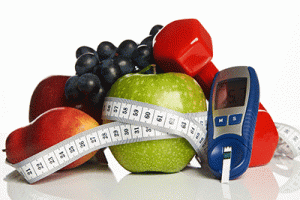How Do You Get Type 1 Diabetes?
In general, Diabetes can be described as the inability of the body to process glucose in the bloodstream. Insulin, a hormone made by the pancreas, allows glucose access to the cells to be converted into energy. The most simple description of diabetes is defined by Hyperglycemia. Hyperglycemia is an elevation of the blood glucose level. Glucose is a single molecule sugar that the body converts into energy in the cells. Diabetes can be broken down into two different types; Type 1 or juvenile-onset diabetes and Type 2 or adult-onset diabetes. The exact cause of either type of diabetes is difficult to ascertain. There are specific differences between the two types of diabetes that define them respectively. Type 1 diabetes is the inability of the pancreas to produce insulin that acts as a key allowing glucose access to the cells of the body. Type 2 diabetes, on the other hand, is the resistance by the cell to the insulin in the bloodstream inhibiting access of glucose into the cells. Both types result in High Blood Glucose Levels and can lead to many complications, some of which can be fatal.
What is Type 1 Diabetes?
Type 1 Diabetes, also known as Juvenile Onset Diabetes, is diagnosed by the inability of the pancreas to produce insulin that allows the glucose into the cell almost like a key. This inability is caused by the destruction of one of the 2 types of cells produced by the Islets of Langerhans in the endocrine portion of the pancreas. The two types of cells the Islets of Langerhans produce in the pancreas are known as Alpha Cells and Beta Cells. The Beta cells are responsible for insulin production. Alpha Cells are responsible for producing glucagon, which in a healthy body will counter low blood glucose levels. Both cells are produced by the pancreas but have opposite functions. Insulin will lower blood glucose levels while glucagon will raise blood glucose levels. In Type 1 Diabetics blood glucose levels are elevated due to lack of insulin. Therapy for Type 1 Diabetes includes administration of synthetic insulin to compensate for elevated Blood Glucose Levels. Symptoms of Type 1 Diabetes include frequent urination, constant thirst, fatigue, nausea, lethargy, sudden weight loss, headaches, and stomach aches. Diabetes has been associated with overall lower energy levels despite ample glucose in the bloodstream. Diabetes is often for this reason referred to as the sleeping illness.
Get Your Diet And Weight Under Control Now
What Causes Type 1 Diabetes?
Type 1 Diabetes is not necessarily genetic and is not like many believe the result of eating too much sugar at a young age. Rather, scientists believe Type 1 Diabetes is an Auto-Immune disease, in which the antibodies or T-cells attack and destroy the Beta Cells, inhibiting insulin production or stopping it altogether. Research suggests that Type 1 Diabetics may have a genetic predisposition to this Auto-Immune dysfunction and that this can be brought on by some sort of environmental factor. This environmental factor acts as a trigger, inducing the Auto-Immune response. The environmental factors doctors believe are responsible for this environmental trigger include exposure to some sort of toxin or virus. Studies suggest that Type 1 Diabetes is more common in children that are not breastfed sufficiently. Though Type 1 Diabetes does not have a calculable or definitive cause, numbers of Type 1 Diabetics continue to increase year after year.
Type 1 Diabetes Treatments
Treatment for Type 1 Diabetes is multifaceted. The most important mode of treatment is the administration of insulin into the body through injection. Many different types of insulin and methods for administering insulin have also been developed. In essence, the technique is the same in that insulin is injected into the fatty tissues of the body to regulate blood glucose levels. Insulin administration alone is not enough to keep glucose levels in line. Nutrition plays an integral role in managing Type 1 Diabetes. In general, a low carbohydrate diet is a diabetic-friendly diet. Also, a diet high in fiber and low in saturated fats is recommended for Type 1 Diabetics. Another important factor in Type 1 treatment is regular physical exercise. A daily routine of walking, bicycling, swimming, or another form of exercise will stimulate the metabolism and help the body maintain a healthy balance in blood glucose levels. Hypertension can have an adverse effect on Type 1 Diabetes. Daily stress can add to fluctuations in blood sugar and to that end stress should be avoided as much as possible. No one factor of treatment outweighs the other, and all must be taken into consideration for good health. There are no known cures for Type 1 Diabetes and modern treatment is more a method of managing the disease by monitoring blood glucose levels and mitigating highs and lows.
About Our Guest Writer:
Tim Delaney, Content Writer. Tim studied Environmental Science at the University of California, Santa Barbara. He is an avid outdoor enthusiast, loves to surf, is passionate about health, and discovering ways to enjoy life with diabetes.

Advertising Disclosure: This post may contain promotional links. Watch the Review may be compensated if you use these links


